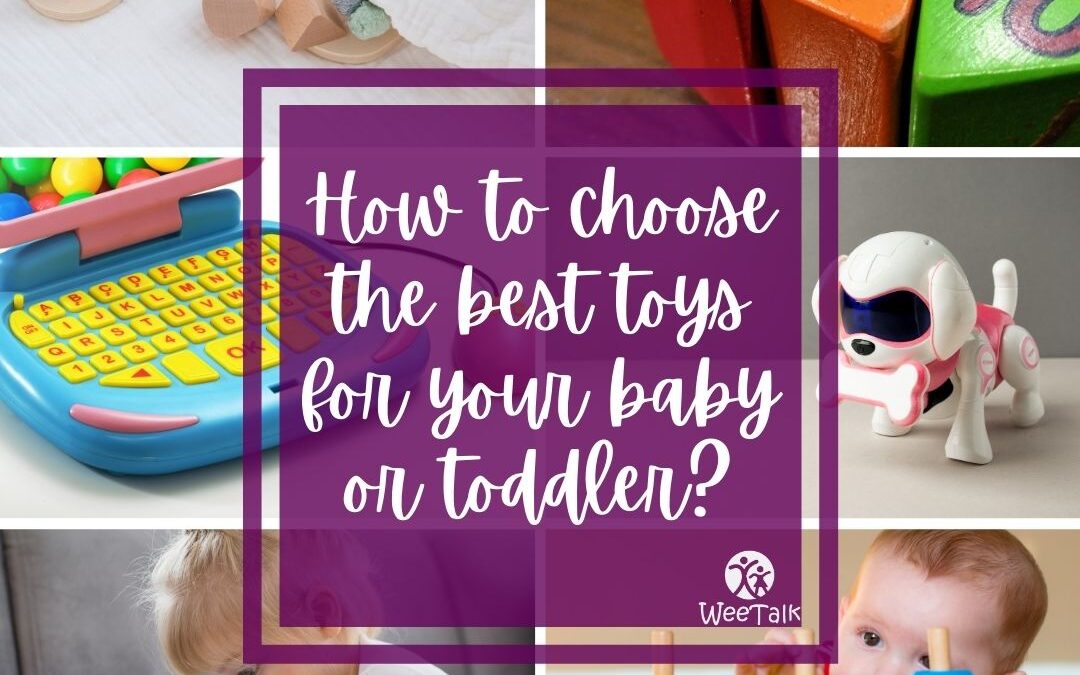This is the time of year many caregivers are thinking about gift-giving and what toys to get for their little ones. This can be challenging if you’re thinking about babies and toddlers. As caregivers, we want the most bang for our buck; we want our child to love what we give (and not lose interest in 5 minutes) and, if it’s not too much to ask, we would like it to encourage development too.
Ok, as a Speech-Language Pathologist, I could go on and on about toys and learning and brain development, but what I really want to say is that you do not need to spend a ton of money on ‘educational’ toys. The very best toy is you, your voice, your warmth, and your smile and laughter. Your engagement with your child. YOU are your child’s first and most important teacher. Really!!!
Okay, okay, I know you want to give your child a tangible gift. So, for that I would suggest toys that might be considered “old fashioned.” You know, ones that require your child to do things to it rather than ones that do things for your child. Toys that do not have batteries (or if they do, just leave battery out). As we go through the list, think high quality. These toys may cost more but they will last (wood, metal or sturdy plastic) and they will keep your child’s attention while they learn! Not to mention, they will take up less space in your toy box. Also, keep in mind your child will attend better if you play with them and model ways to play. You will not only give a tangible gift but an opportunity for bonding.
Let’s get to it! These are not in any particular order.
- Books, books, books!! From board books, touch and feel, or lift the flap books to simple stories. Books are toys too and, of course, they encourage development and can go anywhere.
- Toys with open-ended play (no set ‘rules or structure’) such as blocks (mega blocks, wooden blocks, etc.), Lincoln logs, magna-tiles, nesting cups, cars/trucks/trains with road mats or tracks, a kitchen with dishes and food (or just dishes and food), figures from a favorite show/movie o(or just figures of people as they will last long after your child loses interest in the movie), play doh, dress up, farm or zoo with animals, doll house with people figures, baby dolls with items used during daily routines (bath, wash cloth, clothes, blanket), tools/tool bench, etc.
- Toys that encourage fine/gross motor skills – tunnels, tents, ride on or push toys (no batteries), indoor slide or swing, trampoline, hammer & ball toys, play doh, wooden stringing beads, ring stacker, blocks, peg toys, toys with locks (keys, latches, twist, push button), puzzles (based on child’s level – large peg, small peg, no peg), doll house with people figures, trains with tracks, play doh (with play doh scissors), crayons/markers/paint with paper or coloring books, etc.
- Toys that encourage thinking and problem solving – puzzles, shape sorters, toys with locks (keys, latches), nesting toys, simple games like matching, or other games that have one-step play (i.e. Pop the Pig – simplify the rules), etc.
Always remember to look at the recommended ages on the toys as some may contain parts that are choking hazards or may be way too difficult for younger kids. Toys should be somewhat challenging, not too hard or too easy, or the child will lose interest. Cycle your toys to keep interest. For example, when you see that your child isn’t playing much with a certain toy (assuming that it is still age-appropriate), put it away for later. When you get them out in a few months, it will be a brand-new toy for your little one and you will be surprised at how they play is different with different stages of development, with the same toy.
Check out our Instagram and Facebook for ideas about how to use household items to encourage play. Our therapists and teachers have great ideas about how to use items such as measuring cups, laundry baskets, wash clothes, etc. for play and development!
So, what are the best toys for babies and toddlers? Well, anything YOU do with them, of course!


Recent Comments